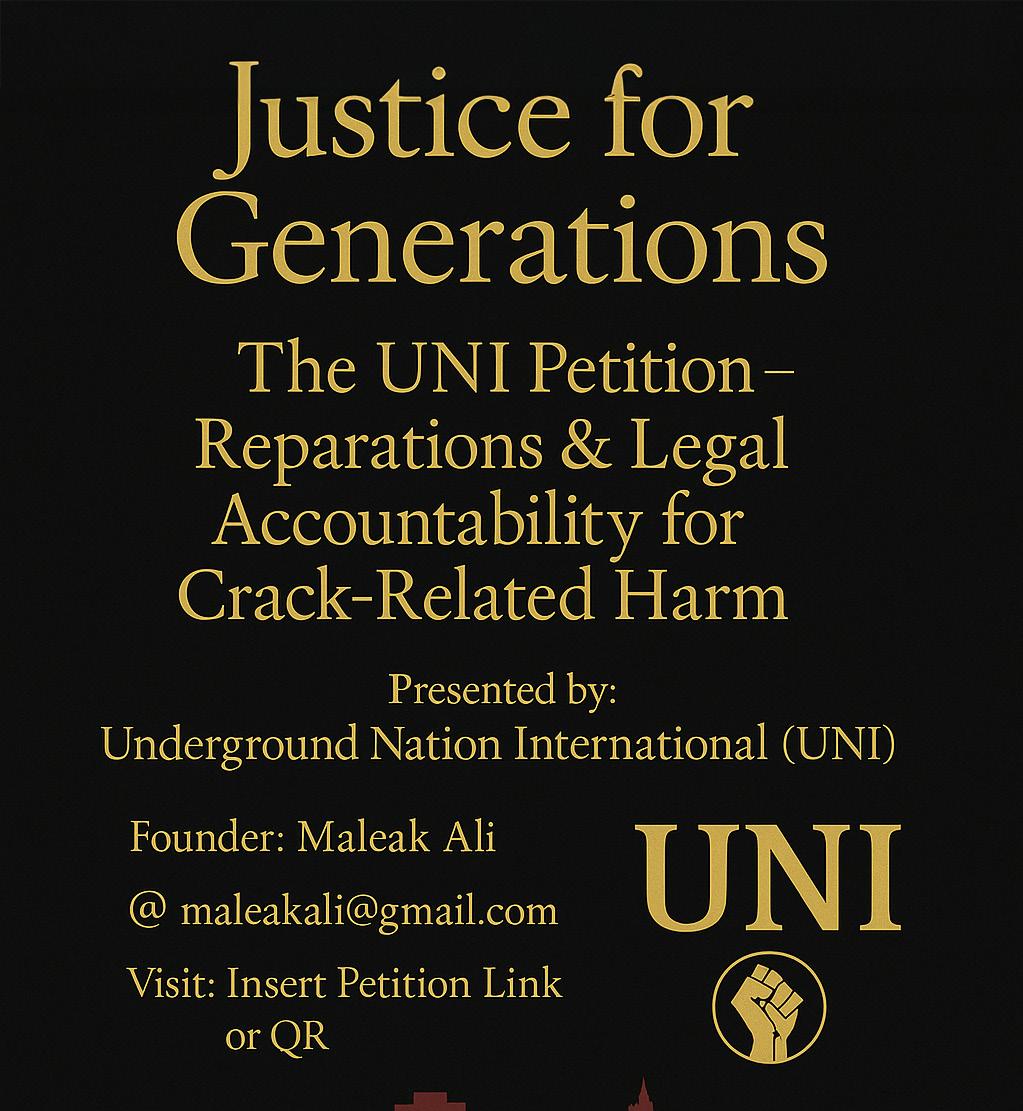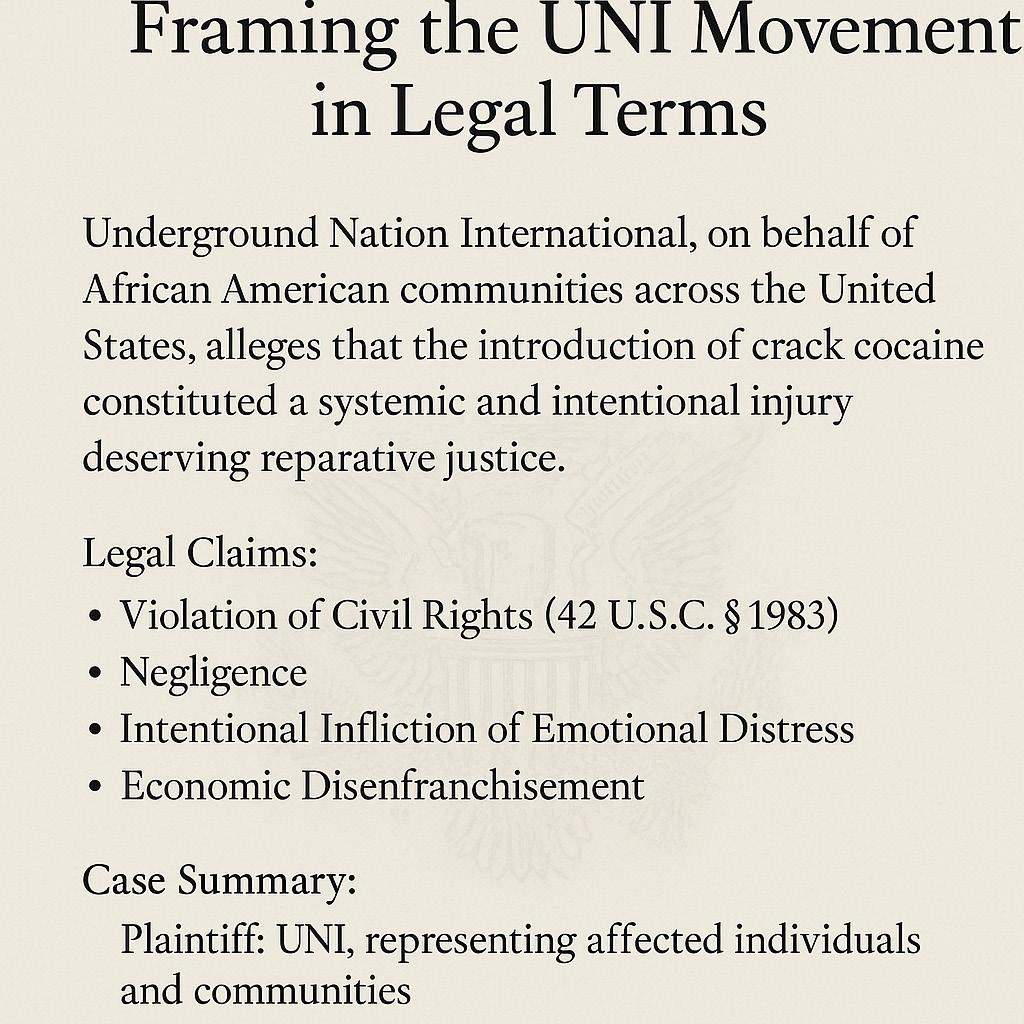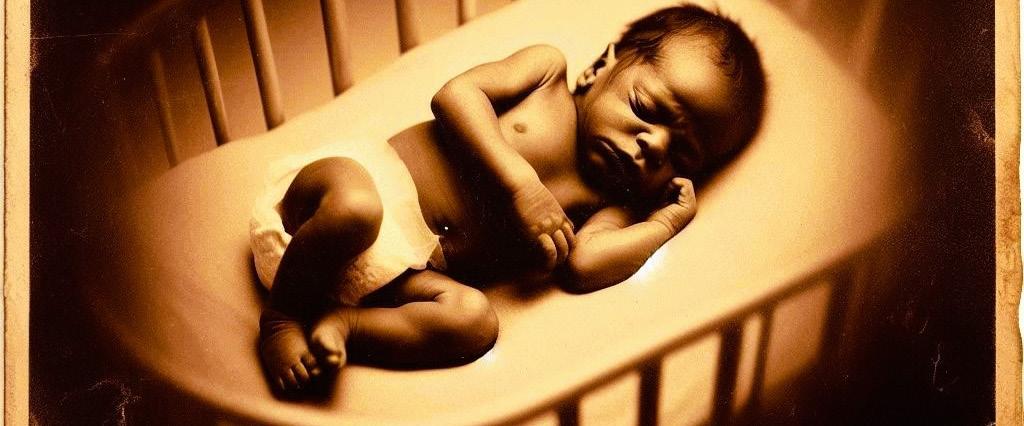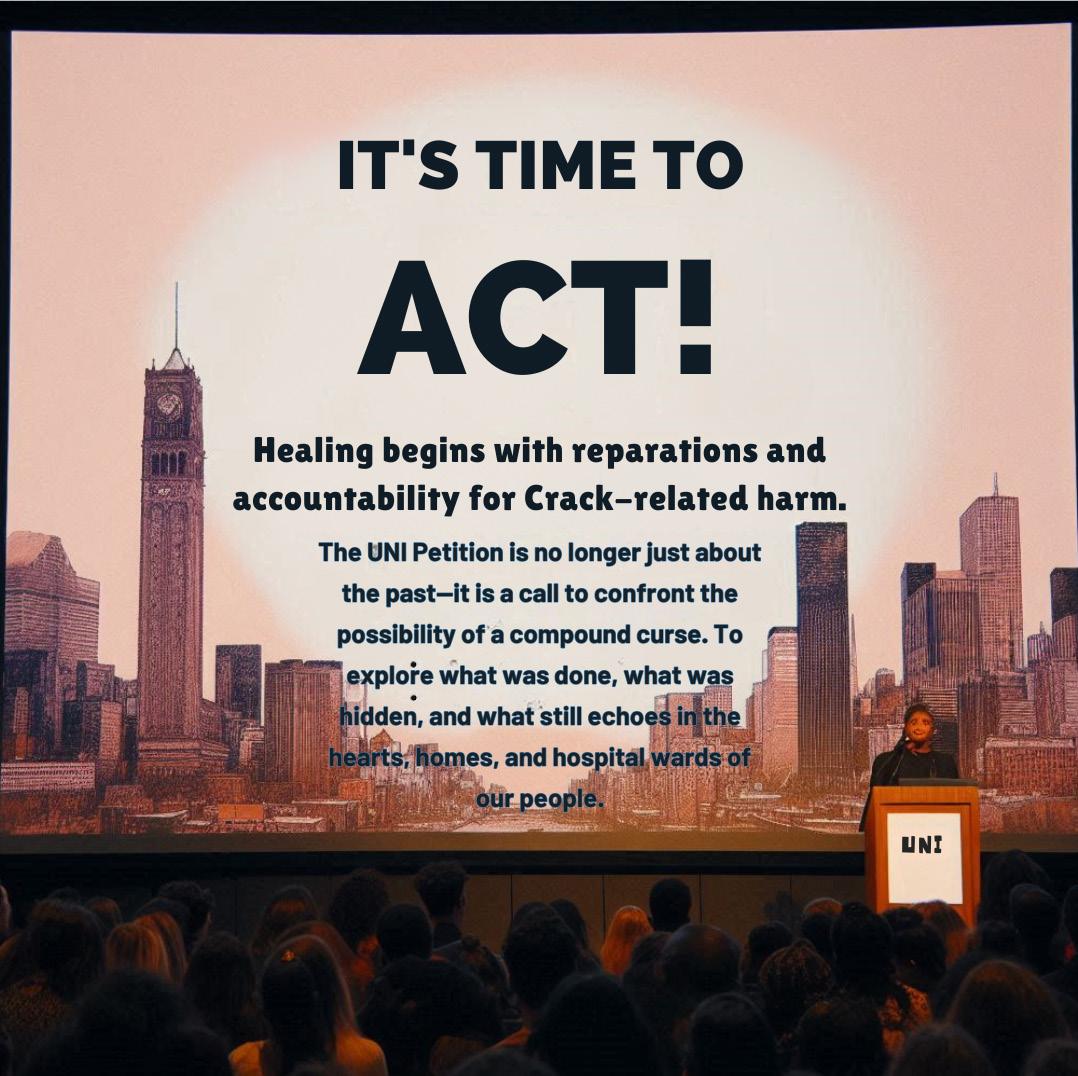




Petition: Seeking Justice and Reparations for the Harm Inflicted on African American Communities by the Introduction of Crack Cocaine
To: The Central Intelligence Agency (CIA) and Relevant Government Bodies
We, the undersigned, stand united in seeking justice for the devastating harm inflicted upon African American communities through the introduction and proliferation of crack cocaine in the 1980s—a deliberate act that mirrors the catastrophic impact of the opium epidemic in China but with even more dire, lasting consequences.
The introduction of crack cocaine into Black communities led to:
• The Birth of ‘Crack Babies’: Generations of children born with physical, emotional, and cognitive challenges due to prenatal exposure to this dangerous drug.
• Economic Disempowerment: African Americans became less competitive for jobs and hindered in educational advancement, perpetuating a cycle o f poverty.
• Destruction of Families: The drug epidemic tore apart families, leading to mass incarceration, foster care displacement, and the breakdown of e ssential support systems in Black households.
These acts have contributed to systemic disenfranchisement, limiting African Americans’ ability to thrive and prosper in the United States.
Our Demands:
To redress the historical and ongoing harm caused, we demand:
1. Acknowledgment of the CIA’s role in the introduction and proliferation of crack cocaine in African American communities
2. Reparations of $50,000,000 or a little over One-Million dollars for each African American per year, since 1980, impacted, to fund community recovery programs and provide economic resources for education, mental health, and business development.
Why This Matters:
This is not merely a call for financial compensation—it is a demand for justice and the opportunity for African Americans to rebuild and thrive. The intentional targeting of Black communities with crack cocaine caused irreparable harm, and it is long overdue for the responsible parties to be held accountable.
We Urge The Government And Its Agencies To Act immediately to address this grievance and ensure that no community is ever subjected to such systemic destruction again.
SIGN OUR PETITION to demand justice and reparations for African Americans today.
“In the 80s and 90s, crack cocaine tore through our communities… not because we failed, But Because The System Did. We were punished. Erased. Left to rebuild with broken tools. This isn’t just history—it’s happening now.


We’re calling on leaders—from Philly to DC— TO REPAIR THE DAMAGE THEY CAUSED.
This petition is the first step. If you believe in justice, Sign It. Share It. Stand
https://www.change.org/unirtv2700
“They called it the war on drugs… we call it the war on truth.
Evidence Shows That The CIA Intentionally Introduced Crack Into The Black Community.

“Crack didn’t just appear; it moved. And many believe it moved with purpose.”
Between the early 1980s and the mid-1990s, Black communities across America were devastated by the crack cocaine epidemic. But alongside grief and outrage, a deeper question took root: Was this engineered? Investigations, whistleblower accounts, and mounting evidence suggest that the U.S. government—particularly the CIA—may have played a role in enabling crack’s spread for geopolitical gain.
Gary Webb’s Dark Alliance
In 1996, journalist Gary Webb published a groundbreaking series revealing how CIA-linked operatives allegedly trafficked cocaine into South Central Los Angeles. Profits funded the Nicaraguan Contras, a rebel group backed by the Reagan administration. The series was met with backlash but later validated by internal government reviews.
CIA Inspector General Report (1998)
Frederick Hitz’s declassified report didn’t confirm Webb’s central claim, but it acknowledged CIA connections to known traffickers and revealed that the agency was aware of drug operations and failed to act. Silence, in this case, was complicity.
Kerry Committee Hearings
Senator John Kerry’s investigation found U.S. funds flowing to companies run by known drug traffickers. It exposed how the State Department and CIA sidelined DEA investigations—creating what many saw as institutional blind spots for illegal operations.
The flood of cheap, potent crack didn’t happen in isolation. Allegations point to a geopolitical chess game—where Black neighborhoods became pawns. The ripple effects: mass incarceration, generational trauma, dismantled families, and economic ruin. This historical reckoning is central to the UNI Petition’s demand for justice.
“Truth must be told—not just the who, But the how, the why, and the damage done.”

DID THE CIA CREATE A CRACK DELIVERY SYSTEM

CONTRA COCAINE SMUGGLERS
SECRET CIA CRACK LABS BLACK COMMUNITY DRUG DEALERS FROM THROUGH TO
Should we petition for reparations… or sue for damages? Or both? This question sits at the heart of the UNI movement. As we navigate a history of harm with hopes for healing, we must weigh two powerful strategies—each with its own promise, challenge, and legacy.
A petition is a moral appeal to conscience. It mobilizes public support and demands accountability from institutions. The UNI Petition seeks recognition of systemic harm, funding for community restoration, and symbolic redress.
Advantages:
- Unites people around a shared call for justice
- Inexpensive and accessible to launch
- Flexible remedies (community investment, education, healing initiatives)
- Elevates the moral high ground and public awareness
Limitations:
- No legal force—institutions aren’t obligated to act
- Results depend on political will and public pressure
- Financial compensation may be limited or symbolic
A lawsuit asserts legal claims backed by evidence. The UNI class action framework demands compensatory damages, formal accountability, and precedent-setting justice for those harmed by crack’s proliferation.
Advantages:
- Legally binding outcome
- Higher potential financial settlements
- Requires defendants to answer in court
- Can spark policy reforms and open doors for future cases
Limitations:
- Costly and complex to initiate
- May take years to resolve
- Risk of dismissal or limited scope of damages


UNI can pursue a dual pathway: Start with a grassroots petition to build awareness, document support, and unify affected voices. Then, transition to legal action using that public momentum—and the community’s testimony—as evidence of widespread harm and urgency.
This hybrid strategy blends: - Moral force and legal structure - Broad engagement and targeted relief
- A campaign that honors both dignity and due process
Justice is not a single door—it’s a corridor with many keys. The UNI Petition may hold more than one.
In the 1980s, crack cocaine exploded into Black communities across America like a chemical wildfire. But what if that blaze carried more than addiction? What if it bore a hidden payload—one with generational consequences?
Underground Nation International now explores a chilling possibility: that the crack epidemic may have been compounded by the use of environmental toxins like DDT Once praised as a miracle cure for malaria, DDT was later exposed as an endocrine disruptor—capable of altering DNA, harming sperm, and passing damage from parent to child, to grandchild, and beyond.
In laboratory studies, rats exposed to DDT gave birth to offspring plagued by illness five generations later. If this compound—or others like it—were laced into street drugs during the height of the CRACK epidemic, the implications are staggering. We may not be witnessing the final chapter of that crisis—but its aftershock.
Could crack-tainted with DDT contribute to the rise of Sudden Infant Death Syndrome (SIDS)? Could today’s Black newborns be inheriting invisible, untreated trauma encoded in their genes? Could this be the mechanism of inherited suffering: not just structural, but chemical?
This theory cannot be proven without investigation. But the suspicion alone demands investigation
The UNI Petition is no longer just about the past—it is a call to confront the possibility of a compound curse. To explore what was done, what was hidden, and what still echoes in the hearts, homes, and hospital wards of our people.


This powerfui and provactive twist deepens the UNI PETITION’s framing from systemic harm to potential Biochemical Warfare with Generational Consequences
DDT is an endocrine disruptor—it mimics hormones and interferes with reproductive development.
It’s been linked to altered sperm DNA, birth defects, and neurodevelopmental delays.
In rats, DDT exposure in one generation led to obesity, kidney disease, and reproductive issues in the fifth generation.
In humans, DDT breakdown products (like DDE) have been found in sperm and placental tissue, with dose-dependent epigenetic changes.
Could this Link to: SUDDEN-INFANT
SIDS (Sudden Infant Death Syndrome) is multifactorial—linked to brainstem abnormalities, serotonin regulation, and environmental stressors.
While no direct link between DDT and SIDS has been proven, DDT’s impact on fetal development and neuroregulation could theoretically increase vulnerability
If crack cocaine were tainted with DDT, and users passed on epigenetic changes, the compounded exposure could plausibly contribute to generational disorders, including SIDS-like outcomes.
